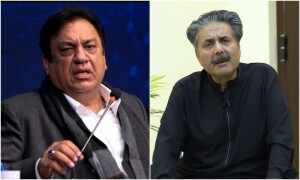THE recent launch of Pakistan’s first electric motorcycle by Prime Minister Imran Khan underscores his government’s strong push towards lower vehicle emissions led by the adoption of electric vehicles as part of its EV Policy 2020-2025 approved last year. The policy, which gives a slew of tax incentives to EV manufacturers, is targeting a robust EV market having a 30pc and 90pc share in passenger vehicles and heavy-duty trucks and buses by 2030 and 2040. The premier termed the launch as a futuristic step, saying that the push for electric mobility is part of the larger initiative of making the country clean and green. Indeed, the support for greater and early adoption of EVs is increasing ever since electric vehicles entered the limelight following the announcement of the EV policy and the arrival of Chinese automotive manufacturers in the Pakistani market.
There can be no two opinions that Pakistan should play its part in mitigating the climate impact of vehicular emissions. But, at the same time, the larger goal of promoting cleaner transportation should not let the increasing enthusiasm for the potential of EVs or their public appeal affect the policymakers’ capacity to appreciate such important issues as safety concerns, range anxiety, disposal of batteries, etc involved in the production and adoption of electric motorcycles powered by low-speed lead-acid batteries instead of high-speed lithium-ion batteries. Though the use of the former, which are easier to procure and cost-effective, will help the manufacturers keep the price of their products low, it may result in higher running costs owing to frequent battery replacements. The lead-acid battery powering two-wheelers, the primary source of mobility for middle-class families across Pakistan, make business sense for investors. But the government should be mindful that China was forced to change its policy in 2019 to move towards international safety standards, after years of junk production, and phase out electric motorcycles powered by lead-acid batteries owing to their low capacity and efficiency, depth of discharge and reduced lifespan. In India, electric motorcycles make up only a negligible fraction of its two-wheeler market. The market share of the ones powered by lithium-ion batteries is even smaller because of the higher battery cost. Unless there is a breakthrough in battery technology, electric motorcycles are unlikely to replace their internal combustion engine counterparts. Till such time, we may only see a negligible transition towards electric two-wheeler mobility.
Published in Dawn, July 15th, 2021










































